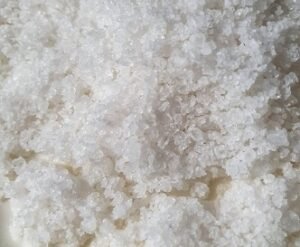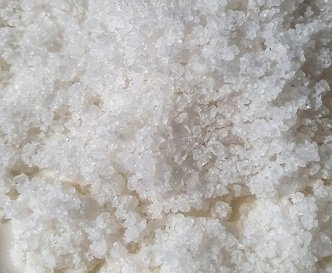What is table salt?

Table salt or asin in Filipino is a salty ingredient commonly found in our kitchen. In science, its chemical name is known as sodium chloride with a chemical formula of NaCl. It is a product of the reaction between Sodium(Na)-metal and Chlorine(Cl)-nonmetal. Sodium chloride is considered an ionic compound in which a metal reacts with a nonmetal.
Table salt, or sodium chloride, is a mineral that is essential for human life. It is found in the blood and tissues of the body and helps regulate blood pressure and fluid balance. Table salt is also used to season food. It has a sharp, salty taste and is made up of small, white crystals.
In chemistry, there are two main types of chemical bonding: covalent bonding and ionic bonding. To simply differentiate, covalent bonding occurs between nonmetals while ionic bonding happens between metals and nonmetals.
| Types of Chemical Bonding | Common Examples |
| Ionic Bonding | Table salt (NaCl)
Magnesium Oxide (MgO) Calcium Chloride (CaCl) |
| Covalent Bonding | Water (H2O)
Ozone (O3) Carbon Dioxide (CO2) Methane (CH4) Table Sugar (C12H22O11) |
OK!. Let’s go back to table salt. So, what is the importance of table salt and what are its uses of it?
Salt is one of the oldest and most popular seasonings in the world. It is made from the mineral sodium chloride (NaCl) and is essential for human life. Salt has many purposes, both culinary and industrial.
Well, table salt is one of the most common household compounds that can be found anywhere. Here are some of the uses of salt in our daily lives:
- Salt is an important part of our daily diet. It plays a role in regulating blood pressure and managing fluid balance. In the human body, salt is the main source of electrolytes that are used in regulating blood pressure and pH. Too little salt can cause problems such as dehydration and heat stroke. Too much salt can lead to high blood pressure and heart disease.
- In some cases, salt can be used as a preservative to prevent spoilage. For example, most dried fish is cured with salt, providing the fish with longer life. Adding salt to the fish can help inhibit bacterial proliferation that causes the decomposition of organic matter.
- Salt is used to add flavor to food. It is used in cooking. Can you imagine your food without salt? Almost foods such as pork, chicken, fish, and other meat need salt to enhance their tastiness. It also helps to retain moisture and enhances the taste of other ingredients.
- It can be used as a microbe killer in aquariums. Some aquarists use salt to treat certain diseases of fish by adding salt into special quarantine tanks.
- Treatment for some fungal infections that cause an unpleasant odor. Some people use salt as a treatment for fungal infection by soaking their feet in a basin of the lukewarm saltwater solution.
- Salt is also an important ingredient in many industrial processes. It is used to make plastics, detergents, and other chemicals. Salt is also necessary for producing paper and making glass.
There are so many uses of salt that are not listed here. Maybe we don’t know its particular uses in other fields. If there are lots of beneficial uses, let’s talk about its bad sides when it’s not used in a proper way. In the human body, too much salt intake in the diet could result to increase in blood pressure that may lead to heart disease as well as stroke. So, it is recommended to consume it in moderation.



